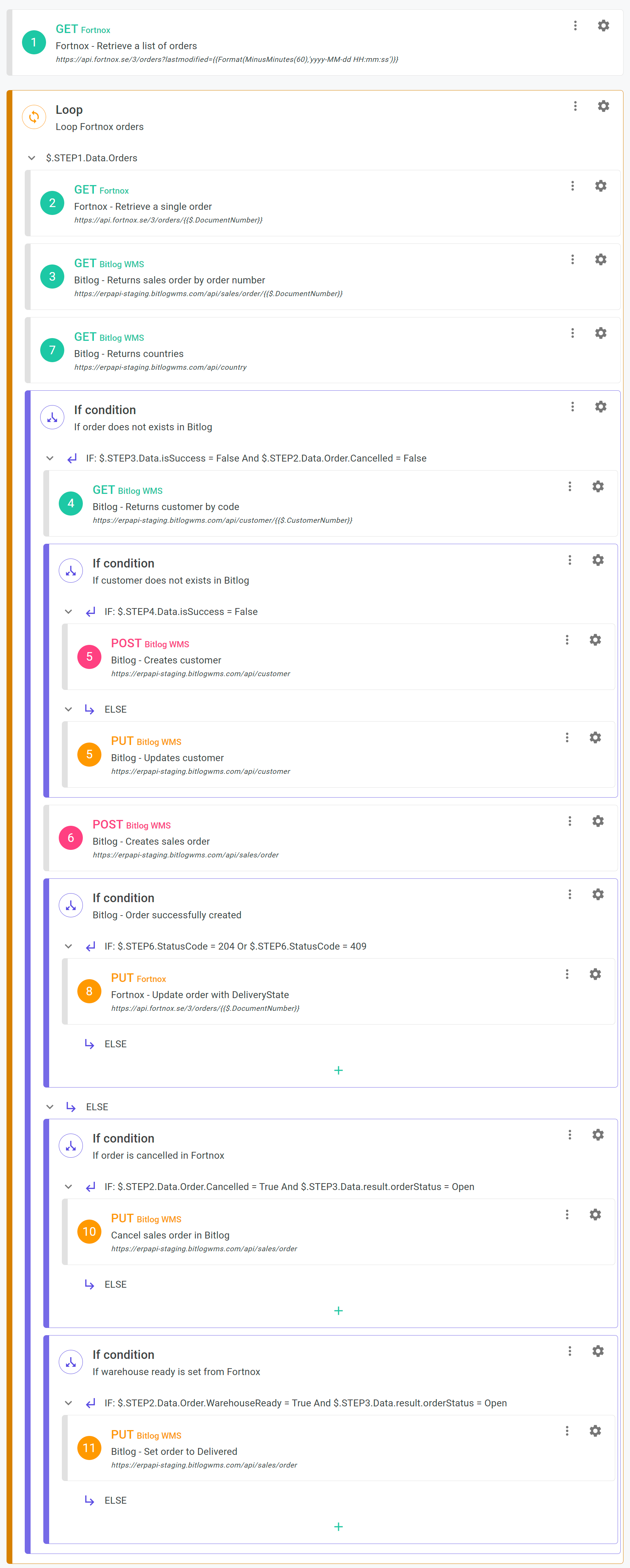In the world of software and data processing, integration flows are the lifeblood of operations, defining the pathways through which data travels and is transformed. These flows ensure that data moves seamlessly between services, databases, and users, supporting a myriad of operations that businesses rely on every day.
Orchestrating the Flow of Information
The basics of integration flow
An integration flow generally starts with a trigger – a defined condition or event that initiates the process. From there, data is retrieved, processed, and passed through various conditional paths where it is further refined or directed to the appropriate destination.
Data Retrieval
In our example flow, the process begins with a ‘GET’ request – a method used in web APIs to retrieve data from a specific resource. The data fetched could range from a list of orders to customer details, depending on the application’s needs.
Conditional Logic
The beauty of an integration flow lies in its conditional logic capabilities. Conditions are set to determine the flow of data based on its content or external factors. If certain criteria are met, one set of actions will be performed, while another set will be executed if those conditions are not met.
Data Creation and Updates
In many cases, the flow will include operations to create new data records (‘POST’ requests) or update existing ones (‘PUT’ requests). This allows the system to maintain up-to-date information across all its platforms and services.
Error Handling
An often-overlooked yet critical component is error handling. The flow must account for potential errors in data retrieval or processing. This might involve sending status codes to indicate the success or failure of an operation or triggering alternative processes to handle exceptions.
Final Operations
As the flow chart concludes, we often see final operations that perform clean-up tasks or status updates. For instance, marking an order as ‘Delivered’ or closing a ticket in a service system.

The Impact on Business Operations
Integration flows like the one depicted are not just about data; they’re about ensuring operational continuity, data integrity, and real-time responsiveness. They play a vital role in areas such as:
- Order Fulfillment: Managing the life cycle of an order from inception to delivery.
- Customer Relationship Management (CRM): Keeping customer data synchronized across all touchpoints.
- Inventory Management: Updating stock levels in real-time to avoid overselling or stockouts.
Conclusion
As businesses continue to digitalize, the role of well-designed integration flows becomes increasingly central to success. By providing a roadmap for data, these flows ensure that every byte finds its place, enhancing efficiency, accuracy, and ultimately, customer satisfaction.
